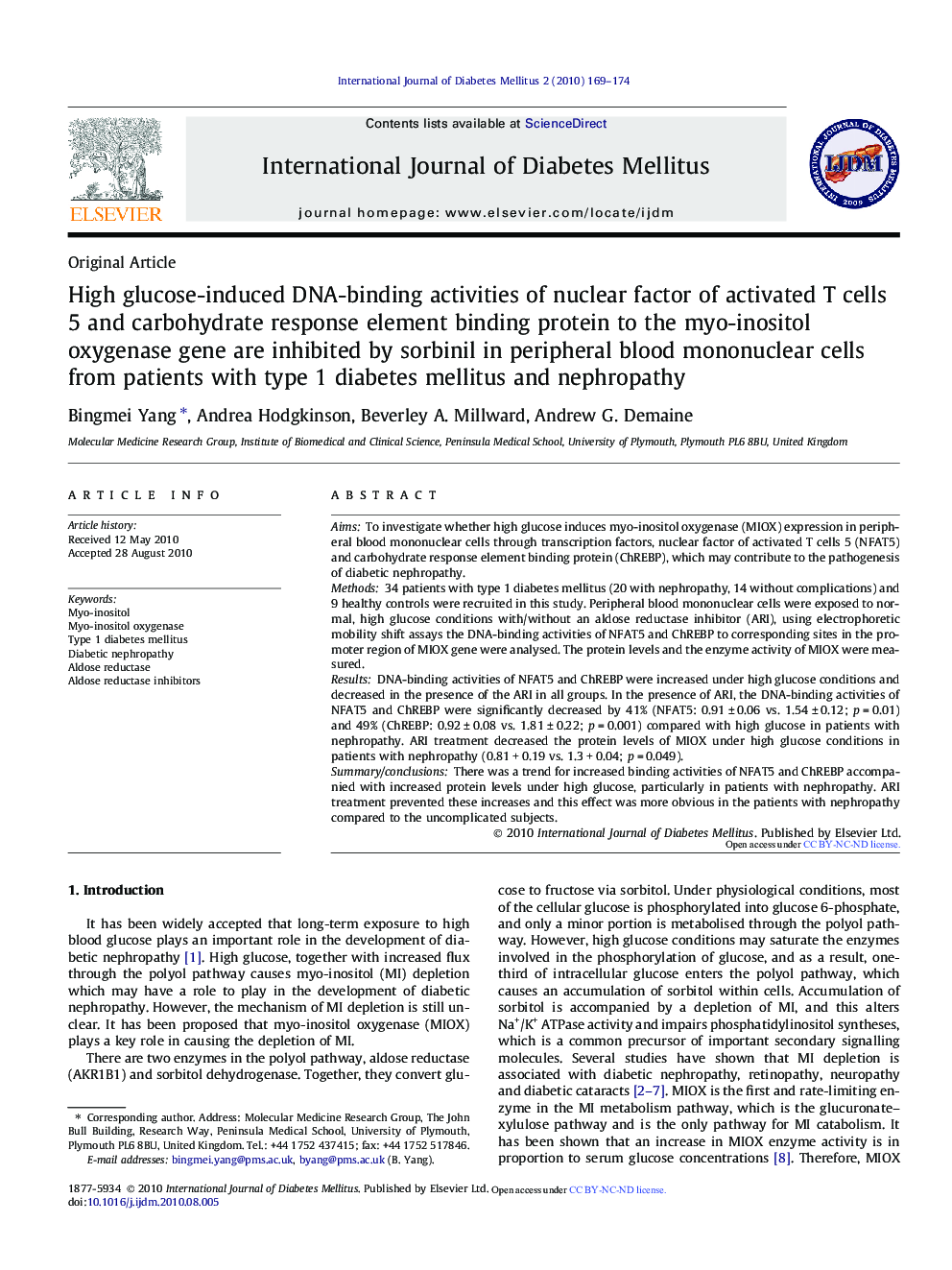| Article ID | Journal | Published Year | Pages | File Type |
|---|---|---|---|---|
| 3270425 | International Journal of Diabetes Mellitus | 2010 | 6 Pages |
AimsTo investigate whether high glucose induces myo-inositol oxygenase (MIOX) expression in peripheral blood mononuclear cells through transcription factors, nuclear factor of activated T cells 5 (NFAT5) and carbohydrate response element binding protein (ChREBP), which may contribute to the pathogenesis of diabetic nephropathy.Methods34 patients with type 1 diabetes mellitus (20 with nephropathy, 14 without complications) and 9 healthy controls were recruited in this study. Peripheral blood mononuclear cells were exposed to normal, high glucose conditions with/without an aldose reductase inhibitor (ARI), using electrophoretic mobility shift assays the DNA-binding activities of NFAT5 and ChREBP to corresponding sites in the promoter region of MIOX gene were analysed. The protein levels and the enzyme activity of MIOX were measured.ResultsDNA-binding activities of NFAT5 and ChREBP were increased under high glucose conditions and decreased in the presence of the ARI in all groups. In the presence of ARI, the DNA-binding activities of NFAT5 and ChREBP were significantly decreased by 41% (NFAT5: 0.91 ± 0.06 vs. 1.54 ± 0.12; p = 0.01) and 49% (ChREBP: 0.92 ± 0.08 vs. 1.81 ± 0.22; p = 0.001) compared with high glucose in patients with nephropathy. ARI treatment decreased the protein levels of MIOX under high glucose conditions in patients with nephropathy (0.81 + 0.19 vs. 1.3 + 0.04; p = 0.049).Summary/conclusionsThere was a trend for increased binding activities of NFAT5 and ChREBP accompanied with increased protein levels under high glucose, particularly in patients with nephropathy. ARI treatment prevented these increases and this effect was more obvious in the patients with nephropathy compared to the uncomplicated subjects.
